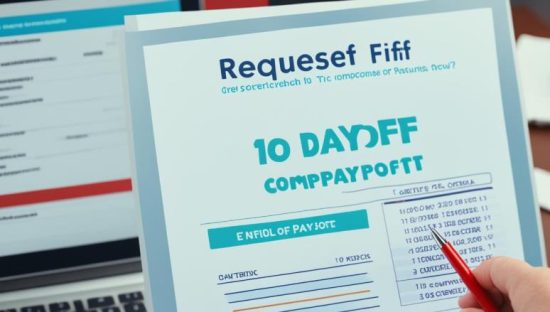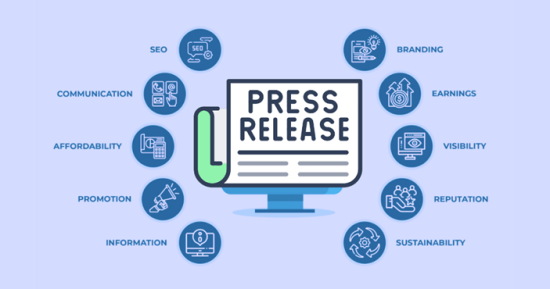
Did you know that a staggering 80% of Americans have some form of debt? Whether it’s a mortgage, student loans, or credit card debt, many individuals find themselves navigating the complex world of borrowing and loan repayment. One lesser-known aspect of loan repayment is the concept of a 10-day loan payoff.
We will explore what exactly a 10-day loan payoff is and provide an easy-to-understand explanation. We will define the term and explain how it works, giving you a clear understanding of the concept. If you’ve ever wondered about the purpose and significance of a 10-day loan payoff, you’ve come to the right place!
What is a 10 Day Loan Payoff?

A 10-day loan payoff involves repaying the entire loan balance within a specific 10-day period, aimed at helping borrowers clear debt quickly and save on accrued interest. It provides a structured timeline for borrowers to focus on becoming debt-free, typically through budgeting, extra payments, or lump sums. Terms and benefits can vary by lender, potentially offering incentives for early repayment. Understanding your loan agreement is crucial to maximize the benefits and manage this accelerated repayment strategy effectively.
How to calculate your 10-day payoff amount
Calculating your 10-day payoff amount is an essential step in understanding how much you need to pay off your loan within the specified timeframe. By determining this amount, you can make informed decisions about managing your finances and meeting your loan obligations.
Here are the steps you can follow to calculate your 10-day payoff amount:
- Gather the necessary information: Start by collecting all the relevant loan details, such as your current loan balance, the interest rate, and any applicable fees.
- Identify the remaining loan term: Determine the number of remaining days in your loan term. This is crucial for accurately calculating the 10-day payoff amount.
- Calculate the daily interest rate: Divide your annual interest rate by 365 to obtain the daily interest rate. This will help you factor in the interest that accrues on your loan on a daily basis.
- Estimate the interest amount: Multiply the daily interest rate by the number of remaining days in your loan term to estimate the interest amount that will accrue during that period.
- Add the estimated interest to your loan balance: Add the interest amount to your current loan balance to get an approximate 10-day payoff amount.
10-day Payoff Amount = Current Loan Balance + (Daily Interest Rate × Remaining Days in Loan Term)
Using this formula, you can determine the exact amount you need to pay off your loan within the given 10-day timeframe.
When You Need a 10-Day Payoff Letter?
There are several situations in which you may find yourself requiring a 10-day payoff letter. This document is important for various financial transactions and can be requested from your lender. Let’s explore some common scenarios that may necessitate a 10-day payoff letter:
- Selling a Property: When selling your home or any other real estate, it’s essential to obtain a 10-day payoff letter. This letter states the exact amount required to pay off your current mortgage balance within the specified timeframe.
- Refinancing a Loan: If you’re considering refinancing your loan, you’ll need a 10-day payoff letter to determine the final amount necessary to satisfy your existing loan obligations. This information allows you to accurately calculate the costs and determine if refinancing is a viable option.
- Transferring Loan: In some situations, you may need to transfer your loan to a new lender. To facilitate this process, the new lender will require a 10-day payoff letter to understand the outstanding balance and loan terms.
- Requesting a Payoff Statement: If you want to obtain a detailed summary of your loan, including the principal balance, interest, fees, and any other relevant charges, you can request a 10-day payoff letter. This statement provides a comprehensive overview of your loan’s financial status.
- Loan Payoff Confirmation: When you’re ready to pay off your loan in full, a 10-day payoff letter serves as confirmation to your lender that you intend to settle the outstanding balance. This document ensures that your payment is processed correctly and that your loan is officially closed.

Requesting a 10-day payoff letter is a straightforward process. Reach out to your lender and provide them with the necessary information, such as your account details and the purpose of your request. It’s essential to plan ahead and allow ample time for the lender to generate the letter before your transaction deadline.
How to get your 10-day payoff letter?
Obtaining a 10-day payoff letter from your lender is a straightforward process that requires a few simple steps. By following these steps, you can ensure a smooth and efficient request for your payoff letter.
Step 1: Contact your lender
The first step is to reach out to your lender and inform them of your intention to obtain a 10-day payoff letter. Provide them with your loan details and any other information they may require.
Step 2: Specify the purpose
Clearly state the purpose of obtaining the payoff letter, such as refinancing or selling your property. This will help your lender understand the urgency of your request.
Step 3: Include necessary information
Make sure to include all the necessary information when requesting your 10-day payoff letter. This may include your loan account number, property address, and any other relevant details. Providing accurate information will expedite the process.
Step 4: Request the letter in writing
It is important to submit your request for the payoff letter in writing. This can be done through a formal letter or email. Be sure to keep a copy of your correspondence for your records.
Step 5: Follow up
After submitting your request, follow up with your lender to confirm that they have received it. Inquire about the expected timeframe for receiving your 10-day payoff letter.
Navigating the Payoff Process with Your Lender
When it comes to paying off your loan, it’s important to communicate effectively with your lender to ensure a smooth transition. By understanding the lender-specific payoff procedures and maintaining open lines of communication, you can navigate the payoff process with ease.

Communicating with Your Lender for a Smooth Transition
During the loan payoff process, it’s crucial to establish clear communication channels with your lender. Reach out to your lender to inform them of your intent to pay off the loan and inquire about any specific documentation or procedures they require. This proactive approach will help streamline the process and avoid any delays.
Be prepared to provide necessary information such as your loan account number, personal identification details, and the desired payment method. Your lender may also request a 10-day payoff letter to calculate the exact amount due. By promptly providing all required information, you can facilitate a smooth transition and ensure a hassle-free loan payoff.
Understanding Lender-Specific Payoff Procedures
Each lender may have their own unique procedures and requirements for loan payoff. It’s essential to familiarize yourself with these lender-specific payoff procedures to avoid any confusion or unexpected obstacles.
For example, some lenders may require you to schedule a payoff appointment or provide additional documentation to authorize the payoff. Others may have specific instructions for making the final payment, such as using a certified check or wire transfer. By understanding these procedures in advance, you can plan accordingly and prevent any last-minute complications.
Refinancing and the 10 Day Payoff Letter
Refinancing involves replacing your current loan with a new one that offers better terms, such as lower interest rates or monthly payments. The refinancing process with a 10-day payoff letter typically follows these steps:
- Evaluating your current loan: Assess the terms, interest rates, and other details of your existing loan to determine if refinancing is beneficial for you.
- Researching lenders: Research and compare different lenders to find one that offers favorable rates and terms that align with your financial goals.
- Submitting an application: Once you’ve chosen a lender, you’ll need to submit a refinancing application, providing the necessary financial documentation.
- Requesting a 10-day payoff letter: As part of the refinancing process, you’ll need to request a 10-day payoff letter from your current lender.
- Receiving the payoff letter: Your current lender will provide you with a 10-day payoff letter that states the outstanding balance on your loan, including any accrued interest, fees, or other charges.
- Providing the letter to your new lender: Finally, you’ll need to provide the 10-day payoff letter to your new lender as proof of the amount required to pay off your existing loan.
Benefits of a 10 Day Loan Payoff for Borrowers
Opting for a 10-day loan payoff can provide borrowers with a range of advantages, making it an appealing option for those looking to improve their financial situation. By understanding the benefits associated with this approach, borrowers can make informed decisions that align with their goals and aspirations.
- 1. Improved Credit Scores: One of the key benefits of a 10-day loan payoff is the positive impact it can have on credit scores. By paying off the loan in a shorter time frame, borrowers can demonstrate responsible financial behavior, leading to an improved credit profile. This can open doors to better interest rates on future loans and improved financial opportunities.
- 2. Interest Savings: Another advantage of a 10-day payoff is the potential to save on interest. By paying off the loan sooner, borrowers can reduce the overall interest accrued over the life of the loan, ultimately saving money in the long run. This can free up funds for other financial goals or provide a sense of relief from debt.
- 3. Financial Freedom: Paying off a loan in a shorter period can also provide borrowers with a sense of financial freedom. By eliminating debt sooner, individuals can enjoy peace of mind, reduced financial stress, and the ability to allocate their resources towards other priorities, such as investments, savings, or personal goals.
- 4. Control Over Finances: Choosing a 10-day loan payoff option allows borrowers to take control of their finances. It enables individuals to set a specific timeline for loan repayment and stick to it, fostering discipline and financial responsibility. This can lead to improved money management skills and a stronger financial foundation.
- 5. Accelerated Debt-Free Journey: For borrowers who are eager to achieve financial freedom, a 10-day loan payoff can be a game-changer. By accelerating the debt-free journey, individuals can reach their goals faster, whether it be saving for a down payment on a home, starting a business, or enjoying a debt-free lifestyle. This option offers a clear path towards achieving financial independence.
Tips for Efficiently Managing Your Loan Payoff

Managing your loan payoff can seem daunting, but with the right strategies, you can efficiently tackle your debt and reach your financial goals. Here are some valuable tips to help you navigate the process:
1. Create a Budget: Start by assessing your current financial situation and creating a realistic budget. Identify your income, expenses, and prioritize debt payments. By allocating a specific amount towards your loan each month, you can stay on track and make progress towards paying it off faster.
2. Prioritize High-Interest Loans: If you have multiple loans, prioritize paying off the ones with the highest interest rates first. By targeting these loans, you can minimize the total interest you’ll pay over time. Make minimum payments on all other loans while putting extra funds towards the high-interest ones.
3. Stay Motivated: To stay motivated throughout your loan payoff journey, set specific goals and milestones for yourself. Whether it’s paying off a certain amount by a certain date or tracking your progress visually, celebrating small victories can help you stay focused and committed.
4. Consider Debt Consolidation: If you’re struggling to manage multiple loan payments, you may want to explore debt consolidation options. Consolidating your loans into a single payment can simplify the process and potentially lower your interest rate. However, carefully evaluate the terms and fees associated with consolidation before making a decision.
Efficiently managing your loan payoff requires discipline and dedication. By following these tips, you can take control of your finances and achieve your goal of becoming debt-free sooner.
FAQs on Loan Payoff
In what situations do I need a 10-day payoff letter?
A 10-day payoff letter may be required in various situations, such as when refinancing a loan, selling a property, or transferring a mortgage. It provides an official statement from the lender stating the exact amount required to pay off the loan within ten days.
What are some common misconceptions about the 10-day loan payoff process?
There are a few misconceptions surrounding the 10-day loan payoff process. One common misconception is that it will negatively impact credit scores. However, paying off a loan early can actually have a positive effect on credit. Another misconception is that it is a complicated process, but it is simply a matter of making a larger payment within the designated timeframe.
What are the benefits of a 10-day loan payoff for borrowers?
Opting for a 10-day loan payoff offers several benefits for borrowers. It allows them to save on interest charges, shorten their repayment period, and potentially improve their credit scores. Additionally, it provides a sense of financial freedom by eliminating debt at a faster pace.








